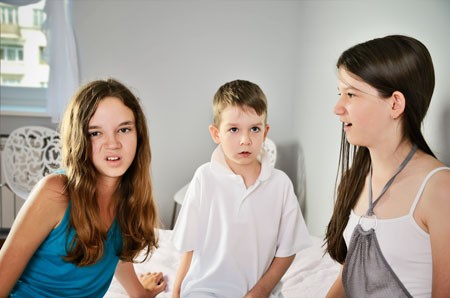Treating Bipolar Disorder in Children and Adolescents
Bipolar disorder in childhood or adolescence can destroy academic, family, and peer relationships and increase vulnerability to drug use, unsafe sexual encounters, disability, and suicide. Treatment is critical to avoid cognitive decline. Given the potential tragic outcomes of undertreating bipolar illness, it is concerning that 40–60% of children and adolescents with bipolar disorder are not in treatment.
In a talk at the 2015 meeting of the International Society for Bipolar Disorder, researcher Cristian Zeni reviewed the existing research on the treatment of bipolar disorder in children and adolescents. A 2012 study by Geller reported response rates of 68% for the atypical antipsychotic risperidone, 35% for lithium and 24% for valproate. Risperidone was linked to weight gain and increases in prolactin, a protein secreted by the pituitary gland, while lithium was linked to more discontinuations and valproate to sedation.
For children or adolescents with aggression, researcher Robert Kowatch recommends quetiapine, aripiprazole, and risperidone. For those with a family history of bipolar disorder, he recommends lithium or alternatively, valproate plus an atypical antipsychotic.
Reseacher Robert Findling has found that lamotrigine has positive effects in childhood mania, and Duffy et al. found in a study of 21 children with mania that 13 remained stable on monotherapy with quetiapine for 40 weeks without relapse, while 5 others required combination treatment with more than one drug. In studies by Karen Wagner, oxcarbazepine was significantly better than placebo at reducing mania in younger children (ages 7–12), but not older children (13–18).
Studies by Duffy and colleagues in 2007 and 2009 recommend lithium for those with a family history of bipolar disorder, atypical antipsychotics for children with no family history of bipolar disorder, and lamotrigine for those with a family history of anxiety disorders.
In children with bipolar disorder and comorbid attention deficit hyperactivity disorder, there is universal agreement that mood should be stabilized first, and then small amounts of stimulants may be added for residual ADHD symptoms. Too often, the opposite occurs, with stimulants given prior to mood stabilization with lithium, anticonvulsants (valproate, lamotrigine, carbamazepine/oxcarbazepine) and/or an atypical antipsychotic.
Some options for treatment with little risk of side effects include vitamin D, the antioxidant N-acetylcysteine, and omega-3 fatty acids. Moderately well-tolerated interventions include the anti-inflammatory antibiotic minocycline and the multi-vitamin complex EM Power Plus. The next tier on the tolerability scale includes more traditional drugs with some evidence of efficacy and good tolerability: lamotrigine and oxcarbazepine. Next would be lithium, valproate, carbamazepine extended-release (under the brand name Equetro) and atypical antipsychotics, all of which have some safety concerns. Randomized trials to compare the efficacy and tolerability of the various atypical antipsychotics are needed. Geller’s study of risperidone shows these drugs may be effective in children and adolescents, but may also have substantial side effects.
Weight gain and related side effects from atypical antipsychotics are more common in children than in adults. Ziprasidone and lurasidone produce the least weight gain, followed by aripiprazole, quetiapine and risperidone, and then olanzapine and clozapine. Lurasidone has not been studied in adult mania, and some experts have disparaged its potential utility in childhood mania. Aripiprazole, quetiapine, and risperidone are among the most widely prescribed drugs for bipolar disorder in young people. Further exploration of ziprasidone is needed.
More research on atypical antipsychotics is needed, for bipolar disorder in both adults and young people. Childhood-onset bipolar disorder has a more difficult course and outcome than adult-onset illness, and finding effective treatments for young people is essential to preventing difficult outcomes.


